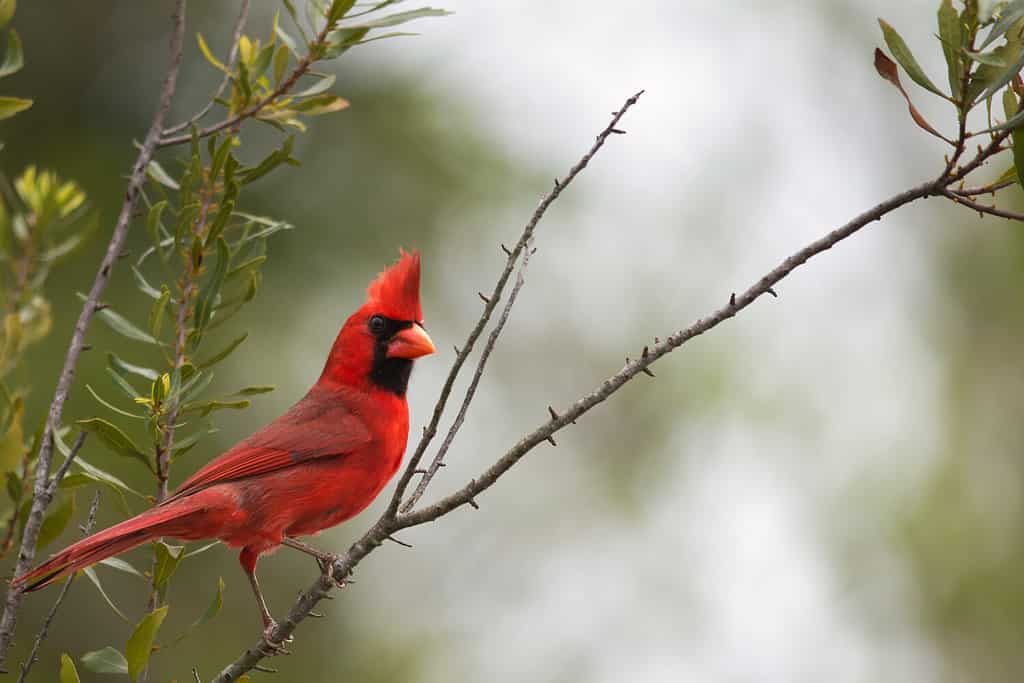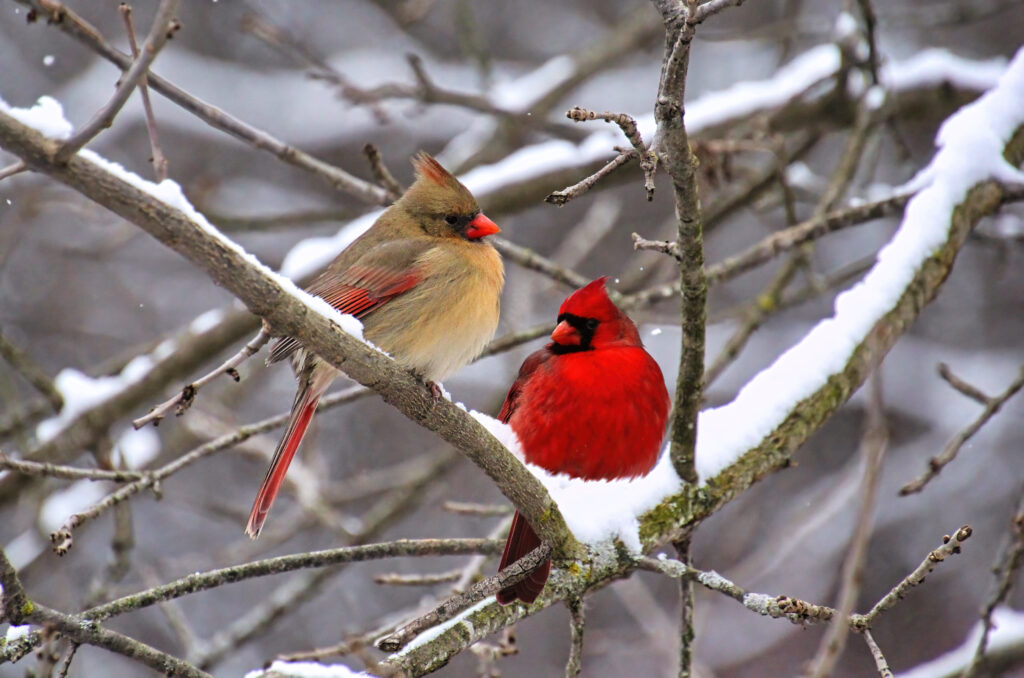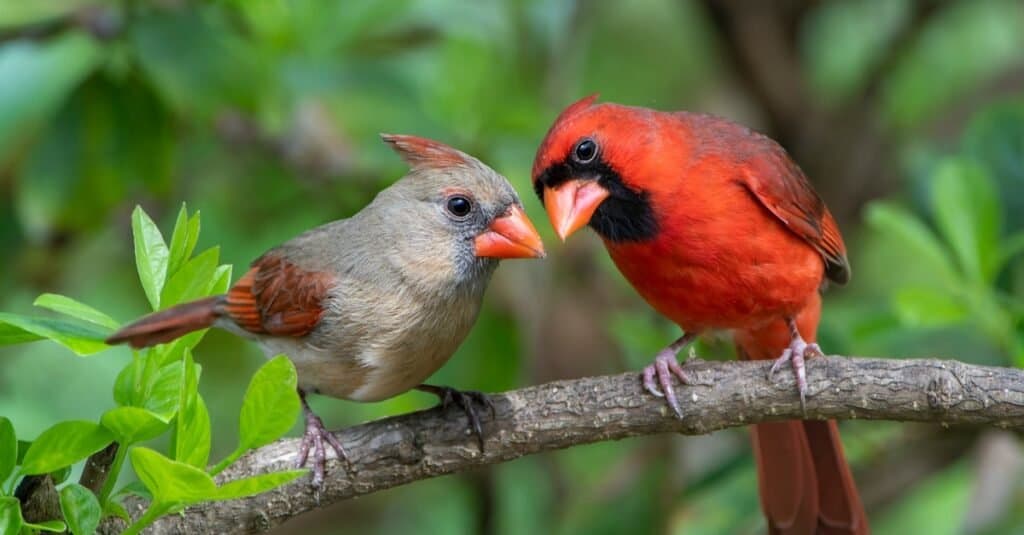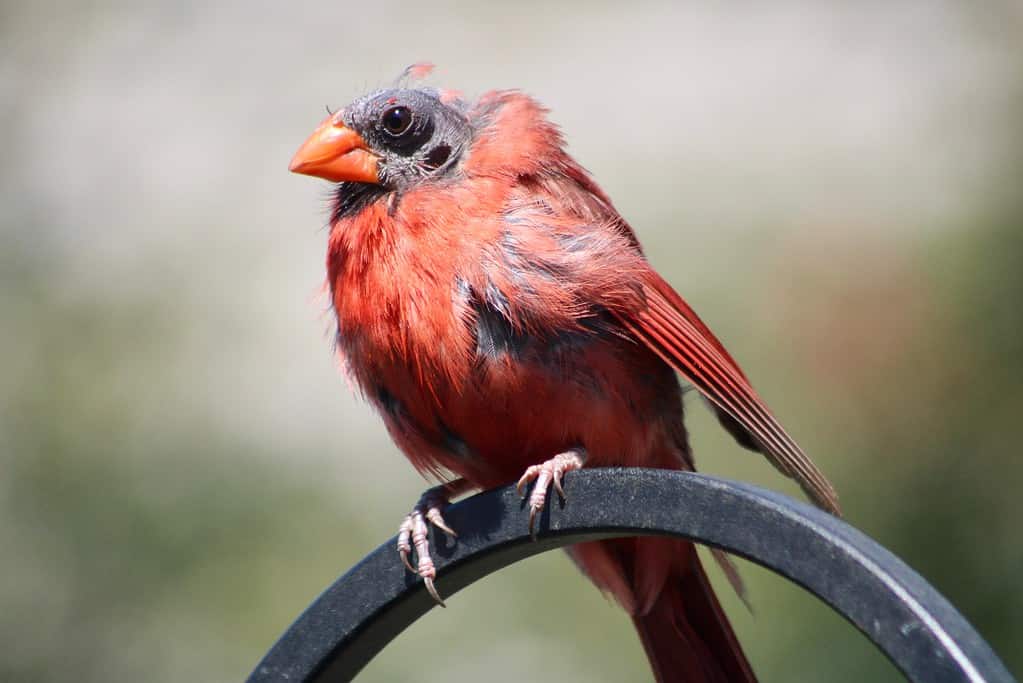Cardinal
Cardinalis cardinalis, Piranga rubra, and others
There are 14 genera and 53 species in the cardinal family
Advertisement
Cardinal Scientific Classification
- Kingdom
- Animalia
- Phylum
- Chordata
- Class
- Aves
- Order
- Passeriformes
- Family
- Cardinalidae
- Genus
- Habia, Chlorothraupis, Piranga, and others
- Scientific Name
- Cardinalis cardinalis, Piranga rubra, and others
Read our Complete Guide to Classification of Animals.
Cardinal Conservation Status
Cardinal Facts
- Prey
- Insects, fruit, nectar, sap, and seeds
- Main Prey
- Invertebrates
- Name Of Young
- chicks
- Group Behavior
- Flock
- Pair
- Fun Fact
- There are 14 genera and 53 species in the cardinal family
- Estimated Population Size
- 120 million
- Biggest Threat
- Habitat loss and climate change
- Most Distinctive Feature
- Bright colors
- Distinctive Feature
- Stout bodies, short legs, and pointed wings
- Incubation Period
- 11 to 13 days
- Age Of Fledgling
- 1 to 2 weeks
- Habitat
- Forests, woodlands, gardens, shrublands, backyards
- Predators
- birds of prey like hawks, owls, eagles, and falcons
- Diet
- Omnivore
- Lifestyle
- Diurnal
- Type
- Bird
- Common Name
- Cardinal
- Number Of Species
- 53
- Location
- North America, South America
- Average Clutch Size
- 2
- Nesting Location
- High in trees
- Migratory
- 1
View all of the Cardinal images!
“Cardinals have bright red, blue, or yellow feathers.”
Summary
The cardinal is a family of medium and large-sized songbirds endemic to North and South America. They inhabit many habitats, from forests to scrublands, and many species in North America migrate south for the winter. The male species are known for being brilliant shades of red, blue, yellow, and orange, while the females often look very different in their dull, brown plumage. Find out everything there is to know about this bird family, including where they live, what they eat, and how they reproduce.
5 Amazing Cardinal Facts
- The Cardinals inhabit areas from Northwest Canada to the southern tip of South America.
- There are 14 genera and 53 species in the cardinal family.
- Cardinals are sexually dichromatic, meaning males and females differ in appearance.
- Species in the neotropics live in their environment year-round, while many in the United States and Canada migrate south for the winter.
- Over 80% of the cardinal family has a conservation status as “least concern.”

History And Origin
The science of phylogeny, which is the study of evolutionary relationships among biological entities, used studies of ancestral states and grouped organisms based on how genetically similar they were and was able to show that birds, lizards, turtles, snakes, and crocodilians were all descended from the original reptile ancestor. It is believed that cardinals, and all birds, evolved from therapods which was most likely the one avian lineage to all birds that quickly adapted to their environments after most of the dinosaurs died out at the end of the Cretaceous period, about 140 million years ago.
Where To Find The Cardinal

This songbird lives across North And South America.
©David Spates/Shutterstock.com
The cardinal lives across two continents: North and South America. You can find them as far north as Canada and as far south as the southern tip of South America near Argentina and Uruguay. However, Central America contains the most cardinal species. These birds live in a wide range of habitats, including forests, grasslands, and arid scrublands.
Locations
- North America
- South America
Cardinal Nest
Most species build open-cup nests placed high in the trees. Generally, males and females build the nest together. But some female species will construct it on their own. They make it using grasses and twigs, occasionally lining the inside with softer material.
Scientific Name
The Cardinalidae family is a group of passenger birds endemic to the Americas. There are 14 genera in the family and 53 individual species: tanagers, grosbeaks, chats, cardinals, seedeaters, buntings, and one dickcissel. The cardinal, also known as the Northern cardinal, is in the genus Cardinalis and is the species Cardinalis cardinalis.
Types Of Cardinals

Northern cardinal males have a much more red bodies than the female, shown here.
©Cathy Keifer/Shutterstock.com
While there are 53 individual species in the family Cardinalidae, this songbird belongs to the genus Cardinalis of which there are only three “true” cardinals. These are:
- Northern Cardinal (Cardinalis cardinalis) – found in the U.S. from Maine to Texas; in Canada from Quebec, New Brunswick, and Nova Scotia and extending west from the U.S.-Mexico border down to northern Guatemala, and northern Belize.
- Desert Cardinal (Cardinalis sinuatus) – found in the following U.S. states: Arizona, New Mexico, and Texas; also found in northern Mexico.
- Vermilion Cardinal (Cardinalis phoeniceus) – found in Columbia and Venezuela.
Size, Appearance, & Behavior

Males are always brighter than the females, which are usually a duller brown.
©iStock.com/Hongkun Wang
The cardinal family consists of medium to large songbirds. They have stout bodies, measuring between 4.5 and 11 inches long and averaging 0.8 to 1.5 ounces. Chats and buntings have small bills, while seedeaters, cardinals, and grosbeaks have large bills. Most species have large heads, short legs, and medium-sized pointed wings. Cardinalids are sexually dichromatic, meaning males and females look very different. The males can be bright red, orange, and blue, while the females are usually duller in color. Males in temperate regions will molt into their winter plumage, which resembles the female. But those in tropical areas will keep their bright colors year-round.
Migration Pattern and Timing
Species from the neotropics live in their environment year-round. Those in the Western United States and Canada are breeding migrants, meaning they travel further south during the winter. In fact, most North American species migrate south for the winter, some going as far as the neotropics in Central and South America.
Diet

The cardinal is an omnivore with a rather varied diet.
©iStock.com/Lynnae_Lowe
Members of the cardinal family are omnivores who primarily forage low to the ground. They have quite an extensive diet and feed on a variety of different insects as well as vegetable matter and fruits and berries.
What Does The Cardinal Eat?
These birds eat insects, fruit, nectar, sap, and seeds. Most species rely heavily on invertebrates during the breeding season to refuel them and their young. Some members, like the cardinals, buntings, and grosbeaks, have thick bills for crushing seeds. While others, like the tanagers, feed on fruit, nectar, and small insects. Most forage low on trees or the ground. But some will forage in high canopies.
Predators, Threats, And Conservation Status

Due to their extensive range and significant population size, most species do not reach the threshold for “threatened” status.
©Bonnie Taylor Barry/Shutterstock.com
The IUCN lists over 80% of the cardinal family as LC or “least concern.” Due to their extensive range and significant population size, most species do not reach the threshold for “threatened” status. However, several species, like the rose-bellied bunting and black-cheeked ant-tanager, are listed as NT or “near-threatened.” Certain species with a small range suffer the most. The primary concern for the cardinal family is the loss of habitat from forest fragmentation. These birds are also highly vulnerable to climate change.
What Eats The Great Cardinal?
The cardinal’s main predators include birds of prey like hawks, owls, eagles, and falcons. They are also preyed on by snakes, jays, squirrels, and domestic animals like dogs and cats. Males sing and use alarm calls to warn of nearby predators. Most male cardinal species are relatively aggressive and will defend their nest by swooping and diving.
Reproduction, Young, And Molting

Northern Cardinals will molt their feathers and grow new ones in late summer.
©Jaclyn Vernace/Shutterstock.com
Most cardinal species are monogamous, but typically only for one breeding season. They may move on to another mate during the following season. The breeding season in temperate regions is seasonal, while breeding occurs year-round in tropical areas. Cardinals lay between one and six eggs and will produce one to three broods per season. Both males and females participate in incubation, and the males often bring food. The incubation period averages 11 to 13 days. The young fledge the nest between one and two weeks. Cardinals usually reach sexual maturity around one year and can live anywhere from three to fifteen years.
Population

The cardinal population is estimated to be around 120 million.
©Agnieszka Bacal/Shutterstock.com
The global population of cardinals is estimated to be around 120 million, and their population appears stable. Several species have decreasing populations, like the orange-breasted bunting and the glaucous-blue grosbeak. Habitat loss is the primary reason for their decline.
Sources:
View all 235 animals that start with CCardinal FAQs (Frequently Asked Questions)
Where do cardinals live?
You can find them as far north as Canada and as far south as the southern tip of South America near Argentina and Uruguay.
How many species are in the cardinal family?
There are 53 species in the cardinal family.
How big are the cardinals?
The cardinal family consists of medium to large songbirds. They have stout bodies, measuring between 4.5 and 11 inches long and averaging 0.8 to 1.5 ounces.
What color are cardinals?
The males can be bright red, orange, and blue, while the females are usually duller in color. Males in temperate regions will molt into their winter plumage, which resembles the female.
Do cardinals migrate?
Species from the neotropics live in their environment year-round. Those in the Western United States and Canada are breeding migrants, meaning they travel further south during the winter.
What do cardinals eat?
These birds eat insects, fruit, nectar, sap, and seeds. Most species rely heavily on invertebrates during the breeding season to refuel them and their young.
What threatens the cardinals?
The primary concern for the cardinal family is the loss of habitat from forest fragmentation. These birds are also highly vulnerable to climate change.
Thank you for reading! Have some feedback for us? Contact the AZ Animals editorial team.
Sources
- The Red List, Available here: https://www.iucnredlist.org/search?query=cardinal&searchType=species

















